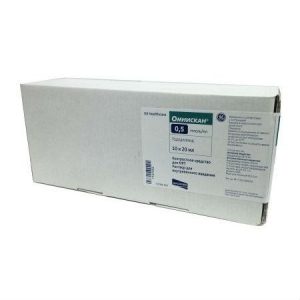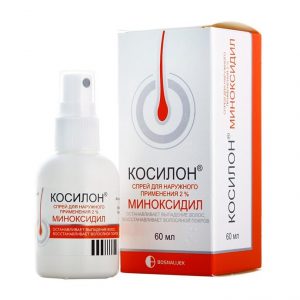Description
Pharmacological action
Mechanism of action
Cefditoren pivoxil – a semisynthetic beta-lactam antibiotic, is a third-generation cefditorin (cefal) prodrug. The mechanism of action of the drug is associated with inhibition of the synthesis of the bacterial wall due to its affinity for penicillin-binding proteins.
Pharmacokinetic / pharmacodynamic characteristics of
When a drug is administered at a dose of 200 mg twice a day, its plasma concentration exceeds the minimum inhibitory concentration for 90% of microorganisms (MIC) for Moraxella catarrhalis, Haemophilus influenzae, Haemophilus parainfluenzae, Streptococcus pyogenes and penicillin-sensitive strains of Streptococcus pneumoniae for at least 50% of the time from the dosing interval. The administration of cefditoren at a dose of 400 mg twice a day ensures that its concentration is kept above the minimum inhibitory concentration (MIC) for 51% of the time from the dosing interval, which exceeds the minimum inhibitory concentration for 50% of microorganisms (MIC 50) for penicillin-resistant Streptococcus pneumoniae .
Resistance mechanisms
Cephditoren as third-generation cephalosporin has common resistance mechanisms for this group of antibiotics. Gram-positive microorganism resistance may be associated with a change in the penicillin-binding protein Streptococcus pneumoniae and Streptococcus viridans, or the appearance of an additional penicillin-binding protein (PBP2a) in Staphylococcus spp. Cephditoren is resistant to most of the most common chromosomal and plasmid beta-lactamases of gram-negative bacteria. However, like other cephalosporins, cefditorin is hydrolyzed by broad-spectrum beta-lactamases mediated by plasmids. In addition, the production of chromosomal beta-lactamase in mutant strains of Enterobacter spp., Citrobacter spp., Morganellaspp can serve as a cause of resistance. and Serratia spp.
The mechanism of action of cefditoren is similar to other cephalosporin antibiotics and differs from the mechanism of action of other groups of antibiotics. In general, there was no cross-resistance between cefditoren and other antibiotic groups. However, in rare cases, some mechanisms of action (e.g. associated with the impermeability of the inner membrane or with the presence of the mechanism of active removal of the antibiotic from the cell) can be similar for all groups of antibiotics. This causes a certain level of resistance to all antibiotics.
Minimum Inhibitory Concentration (MIC)
Recommended MIC for cefditoren, which classifies microorganisms with high, intermediate sensitivity and resistance: sensitive – 0.5 g / ml, with intermediate sensitivity -> 0.5 g / ml and
Sensitivity The table below provides information on the sensitivity spectrum of most microorganisms for approved indications for use.
The prevalence of acquired resistance may vary depending on the geographical area, as well as in individual pathogens. For this reason, it is advisable to obtain information on the sensitivity of microorganisms in a particular region, especially in the treatment of severe infections. In cases where the resistance of pathogens is in doubt, you can seek help from a specialist who will evaluate the feasibility of prescribing cefditoren in a specific clinical case.
Usually sensitive species (resistance less than 10%, European data)
Aerobic gram-positive microorganisms: Streptococci groups C and G
Methicillin-sensitive strains of Staphylococcus aureus1
Streptococcus agractactidae
Streptococccus straptococcus pneumtococcus Moraxella catarrhalis 1
Anaerobic microorganisms: Clostridium perfringes
Peptostreptococcus spp.
Microorganisms with initial resistance to cefditorin
Aerobic gram-positive microorganisms: Enterococcus spp.
Methicillin-resistant strains of Staphylococcus aureus
Aerobic gram-negative microorganisms: Acinetobacter baumanii
Pseudomonas aeruginosa
Anaerobic microorganisms: Bacteroides fragilis group Clostridium difficile srdlp.
Mycoplasma spp.
Legionella spp.
1 – clinical efficacy has been shown for susceptible pathogens according to approved indications.
2 – Some strains with high resistance to penicillin may have a reduced sensitivity to cefditoren. Strains resistant to cefotaxime and ceftriaxone should not be considered susceptible to cefditoren.
Gram-negative microorganisms, which contain chromosomal beta-lactamases, such as Citrobacter freundii, Enterobacter aerogenes, Enterobacter cloacae, Morganella morganii, Serratia marcescens, must be considered resistant to cefditoren, despite their apparent susceptibility in vitro.
Indications
Treatment of infections caused by cefditoren-sensitive organisms:
upper respiratory tract infections: acute tonsillopharyngitis, acute sinusitis
lower respiratory tract infections: exacerbation of chronic pulmonary infections of the skin and parathyroid skin , abscess, folliculitis, impetigo and furunculosis.
Contraindications
Hypersensitivity to cefditoren, other cephalosporins, or any other component of the
preparation severe allergic reactions to penicillins and other beta-lactam antibacterial drugs
hepatitis C liver disease a history of
primary carnitine deficiency
children under 12 years of age
simultaneous use of cefditoren pivoxil and H2-gi blockers taminovyh receptors.
Caution
Patients with hypersensitivity to other beta-lactam antibiotics due to the possibility of developing cross-allergic reactions.
Concomitant use with aminoglycosides and diuretics (furosemide).
Patients with pathology of the gastrointestinal tract, including a history of colitis.
Composition
Active ingredient: cefditoren pivoxil in terms of cefditoren 200 mg.
Excipients: how much mannitol is needed (approximately 35 mg), sodium caseinate 100 mg, croscarmellose sodium 150 mg, sodium tripolyphosphate 4 mg, magnesium stearate 5 mg, Opadry white 35 mg (hypromellose 21.9 mg, titanium dioxide 10.9 mg , macrogol-400 2.2 mg), Carnauba wax 0.06 mg, ink Opacode blue (shellac IN IMS 74 OP, FD&C blue No. 1 50.41%, butanol 24.35%, aluminum varnish based on brilliant blue dye 11 , 25%, titanium dioxide 4.49%, propylene glycol 2.91%, isopropanol 4.65%, ammonia solution concentrated 1.94%).
Dosage and Administration
Inside.
Tablets should be swallowed whole with plenty of water, preferably after meals.
The recommended dose depends on the severity of the infection, the patient’s initial condition and potential pathogens.
Adults and children over 12 years of age
Acute pharyngotonzillitis, acute sinusitis and uncomplicated infections of the skin and subcutaneous fat: 200 mg every 12 hours for 10 days.
Exacerbation of chronic bronchitis: 200 mg every 12 hours for 5 days.
Community-acquired pneumonia: 200 mg every 12 hours for 14 days. In severe cases, a dose of 400 mg is recommended every 12 hours for 14 days.
Elderly patients
For elderly patients, with the exception of cases of severe impairment of liver and / or kidney function, dose adjustment is not required.
Impaired renal function
Dose adjustment is not required in patients with mild renal impairment. In patients with moderate renal failure (creatinine clearance 30-50 ml / min), the recommended dose should not exceed 200 mg twice a day. In patients with severe renal failure (creatinine clearance less than 30 ml / min), the maximum daily dose should not exceed 200 mg.
In patients on hemodialysis, the recommended dose has not been established.
Impaired liver function
Dose adjustment is not required in patients with mild or moderate hepatic impairment (Child-Pugh classes A or B). In severe liver failure (Child-Pugh class C), data allowing the administration of the recommended dose have not been obtained.
Side effects
Adverse events are listed below, depending on the anatomical and physiological classification and frequency of occurrence. The frequency of occurrence is determined as follows: very often ( 1/10), often ( 1/100 and Metabolism and nutrition
Rarely: anorexia.
Nervous system
Frequently: headache.
Rarely: nervousness, dizziness , insomnia, drowsiness, sleep disorders
From the organ of vision
Very rarely: photosensitivity.
From the ENT organs
Very rarely: pharyngitis, rhinitis, sinusitis, tinnitus
From the respiratory system, chest and mediastinal organs
Very rare: bronchospasm.
From the side s gastrointestinal tract
Very common: diarrhea
Often: nausea, abdominal pain, dyspepsia.
Rarely: constipation, flatulence, vomiting, candidiasis of the oral cavity, belching, pseudomembranous colitis, dry mucous membranes of the mouth, perversion of taste.
Very rare: aphthous stomatitis.
From the liver and biliary tract
Rarely: impaired liver function.
From the skin and subcutaneous fat
Rarely: rash, itching, urticaria.
From the musculoskeletal system and connective tissue
Very rare: myalgia.
From the genitourinary system
Often: candidal vaginitis.
Rarely: vaginitis, leucorrhoea.
Other reactions
Rarely: fever, asthenia, generalized pain, excessive sweating.
From the laboratory parameters
Sometimes: leukopenia, thrombocytosis, increased concentration of alanine aminotransferase (ALT).
Rarely: increased blood coagulation time, hyperglycemia, hypokalemia, bilirubinemia, increased concentrations of aspartate aminotransferase (ACT), alkaline phosphatase, albuminuria.
In addition, isolated cases of eosinophilia, thrombocytopenia, a decrease in thromboplastin time, thrombocytopathy, an increase in the concentration of lactate dehydrogenase (LDH), hapoproteinemia and an increase in creatinine concentration have been described.
There have also been separate reports of the following adverse events: – from the hemopoietic organs: hemolytic anemia, lymphadenopathy
– from the side of water-electrolyte metabolism: dehydration
– from the psyche: dementia, depersonalization, emotional lability, euphoria, hallucinations, disorder increased libido,
collapse – from the nervous system: amnesia, impaired coordination, muscle hypertonicity, meningitis, tremor
– on the part of the organ of vision: impaired vision, disturbances on the part of the organ of vision, eye pain, blepharitis
– on the part of the cardiovascular system: atrial fibrillation, heart failure, tachycardia, ventricular extrasystole, postural hypotension srd – from the gastrointestinal tract: hemorrhagic colitis, ulcerative colitis, gastrointestinal bleeding, glossitis, hiccups,
language discoloration – from the urinary system: dysuria, kidney pain, nephr ie, nocturia, polyuria, urinary incontinence, urinary tract infection
– on the part of the genitourinary system: pain in the breast, menstrual disorders, metrorrhagia, erectile dysfunction
– Other reactions: bad body odor, chills. The following adverse reactions were not recorded as adverse events after the use of cefditoren, but they are typical for cephalosporins: – allergic reactions: allergic reactions, including Stevens-Johnson syndrome, erythema multiforme, serum sickness, toxic epidermal necrolysis
– from the urinary system: impaired kidney function, toxic nephropathy
– from the liver and bile ducts: cholestasis
– from the hematopoietic organs: aplastic anemia.
Overdose of
Symptoms of
In case of an overdose of the drug, the patient may experience symptoms such as nausea, vomiting, diarrhea.
Treatment
With the development of the clinical picture of an overdose of the drug, symptomatic therapy is indicated.
Storage conditions
In the original packaging at a temperature not exceeding 30 ° C. Keep out of the reach of children.
active substance
cefdito Ren
otpuska IZ
pharmacy prescription
lekarstvennaja form
tablets




